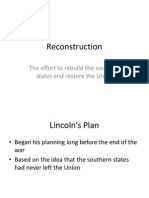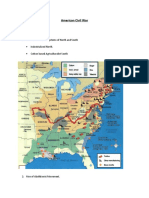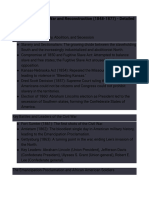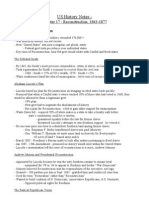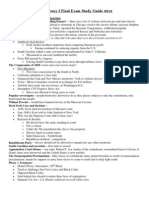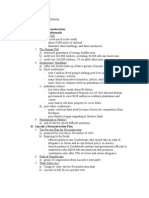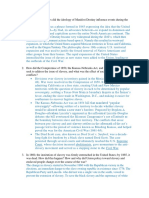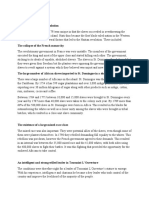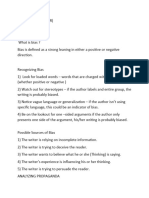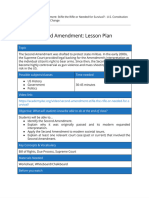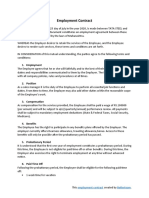0% found this document useful (0 votes)
20 views3 pagesUnit 4 Study Guide
The document outlines the Civil War and Reconstruction era in the United States, highlighting the causes of the war, key events, and the impact of Lincoln's leadership, including the Emancipation Proclamation and the preservation of the Union. It also discusses the challenges of Reconstruction, the establishment of the Freedman’s Bureau, and the introduction of the Reconstruction Amendments aimed at securing rights for freed slaves. The end of Reconstruction led to the rise of Jim Crow laws and significant setbacks for African American civil rights.
Uploaded by
jeffersonCopyright
© © All Rights Reserved
We take content rights seriously. If you suspect this is your content, claim it here.
Available Formats
Download as DOCX, PDF, TXT or read online on Scribd
0% found this document useful (0 votes)
20 views3 pagesUnit 4 Study Guide
The document outlines the Civil War and Reconstruction era in the United States, highlighting the causes of the war, key events, and the impact of Lincoln's leadership, including the Emancipation Proclamation and the preservation of the Union. It also discusses the challenges of Reconstruction, the establishment of the Freedman’s Bureau, and the introduction of the Reconstruction Amendments aimed at securing rights for freed slaves. The end of Reconstruction led to the rise of Jim Crow laws and significant setbacks for African American civil rights.
Uploaded by
jeffersonCopyright
© © All Rights Reserved
We take content rights seriously. If you suspect this is your content, claim it here.
Available Formats
Download as DOCX, PDF, TXT or read online on Scribd
/ 3





